What is a Water Damage Assessment?
Experiencing a fire or flood in your home is a traumatic event. Once the immediate danger has passed, it’s crucial to understand the extent of the damage. A thorough water damage assessment is the first step in this recovery journey. This process isn’t just about identifying visible damages; it’s about foreseeing potential future issues and estimating costs for complete water damage restoration.
The Imperative of Professional Intervention
While you might be tempted to take stock of the damage yourself, remember: The aftermath of a disaster isn’t just overwhelming emotionally but can be deceptive to an untrained eye. This is why involving both your homeowners’ insurance agent and a seasoned restoration company is a wise move. Their combined insights not only ensure a comprehensive evaluation but also smooth the path to a fair settlement with your insurance. This collaborative approach can lead to your insurance covering a significant portion of the restoration costs.

Understanding the Water Damage Assessment
To appreciate the depth and precision that professionals bring to a water damage assessment, let’s dive deeper into the areas they focus on:
- Roof Integrity: Beyond evident aspects like collapsed sections, experts will check for subtler signs. This includes moisture penetration through missing shingles, damaged flashing, or compromised underlayment, which might lead to mold growth or insulation damage.
- Exterior Vigilance: Water or fire can jeopardize the protective function of exterior walls. Apart from visible damages, professionals check for weakened structures, compromised water repellency, and hidden mold pockets in wall cavities.
- Windows & Doors: Beyond the evident broken glass, assessment professionals ensure that window seals remain intact, preventing future water or air leaks. The frames and threshold of doors, too, are checked for warping or other damage.
- Landscape Review: The impact on your yard might seem trivial, but water logging can damage the foundation. Additionally, damaged landscaping can affect your property’s drainage, posing future water intrusion risks.
- Attic Inspection: The attic is often overlooked, yet it’s a hotspot for potential hidden damage. Professionals will check for compromised structural integrity, mold growth, damaged electrical systems, and ventilation issues.
- Internal Rooms: Every room has its unique set of vulnerabilities. While you might notice surface-level wetness, experts will delve deeper, checking beneath flooring, behind walls, and even within electrical outlets and fixtures for moisture and damage.
- Bathrooms: Beyond the obvious fixtures, professionals ensure that there’s no hidden water accumulation that could compromise flooring or wall structures. They’ll also evaluate plumbing to ensure there’s no risk of future leaks.
- Basement Considerations: Especially prone to water damage, basements require detailed scrutiny. Beyond visible flooding, experts will check for water lines on walls, possible mold growth, moisture-induced electrical risks, and signs of foundation stress.
Post-Assessment Steps
Once the assessment is complete, it’s not just about repair; it’s about prevention. Professionals can offer insights into waterproofing, improving drainage, installing water alarms, and other steps to safeguard your home against future disasters.

Frequently Asked Questions About a Water Damage Assessment
What exactly is a water damage assessment?
Answer: A water damage assessment is a comprehensive evaluation conducted by professionals to determine the extent of water-related damage to a property. This assessment identifies the areas affected, the severity of the damage, and potential health risks like mold growth, and estimates the cost of repairs and restoration.
How soon should I get an assessment after noticing water damage?
Answer: It’s crucial to initiate an assessment as soon as you notice water damage. Delaying can lead to further complications, including structural weaknesses, mold growth, and escalated repair costs. Immediate assessment also expedites the insurance claim process.
Can I perform the assessment myself?
Answer: While homeowners can identify obvious signs of water damage, professionals have the expertise, equipment, and knowledge to detect hidden damages and potential risks. It’s recommended to involve professionals to ensure a thorough and accurate evaluation, which can be crucial for insurance claims.
How long does a water damage assessment typically take?
Answer: The duration varies depending on the property’s size and the extent of the damage. Typically, an assessment can take anywhere from a couple of hours to an entire day. Larger properties or those with severe damage might require more than one day.
Will my insurance cover the cost of the assessment and subsequent repairs?
Answer: Coverage depends on your insurance policy’s specifics and the cause of the water damage. In many cases, if the damage is sudden and accidental, your insurance might cover the assessment and repair costs. However, damages due to negligence or lack of maintenance might not be covered. It’s essential to review your policy and discuss it with your insurance agent.
The Ripple Effect of Water Damage
When water breaches the confines of your home, it doesn’t just leave visible marks; it creates a ripple effect, impacting the very foundation of the structure. Water can seep into the minutest of cracks, gradually weakening the materials from within. Over time, this can cause foundational shifts, jeopardizing the entire structural integrity of the home.
Health Implications of Ignored Damage
Beyond the evident physical damages, unaddressed water damage can have significant health implications for the inhabitants. Mold and mildew flourish in damp environments, and prolonged exposure can lead to respiratory issues, allergies, and other health complications. A thorough water damage assessment ensures that such potential threats are identified and addressed before they escalate.
Financial Impacts and Future Prevention
Undetected water damage can lead to skyrocketing repair costs in the future. By investing in a timely assessment, homeowners can often save on massive repair bills down the line. Moreover, an assessment isn’t just about addressing the present; professionals provide insights and recommendations to prevent potential future water-related damages. This could mean suggesting upgrades, reinforcing certain areas of the home, or even just advising on better maintenance practices
Final Thoughts
In essence, a water damage assessment report goes beyond surface-level examination. It’s a comprehensive approach that not only aims to restore your home to its former glory but also ensures it stands strong against future calamities. Embracing the expertise of water damage restoration professionals can be the difference between a house and a safe, secure home.

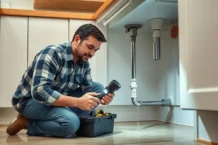
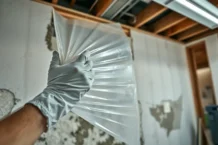
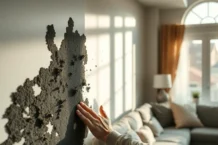

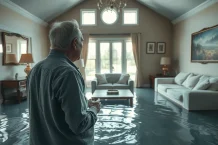
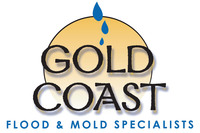


Follow Us!